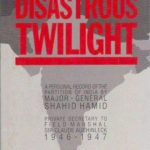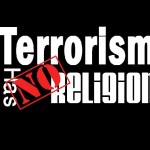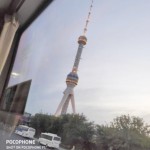A peaceful solution to this rhetoric seems difficult after evaluating the contemporary strategic tussle among North Korea and the US
By Beenish Altaf
THE relationship between the US and North Korea has been antagonistic since the Korean War back in 1952-53. That was when Korean Peninsula was divided into two parts that reign up till now, and is consequently called a permanent quandary since a long time. South Korea has the support of Americans and is looked after in all aspects by the US itself, whereas Russia and China are considered to be backing North Korea. North Korea, in order to fend off the regional danger posed by America’s allied countries, indulged in the development of nuclear and missile program that is growing day by day endangering the US, South Korea and Japan.
As North Korea is aspirant of its sixth nuclear weapons test, the US as a consequent, warned North Korea in very open words that all options were on the table which include military strikes on North Korea to curb its nuclear aspirations. Despite the US military movements and its outrageous war intimidation, North Korean foreign Minister Han Song-ryol stated:
“Now that we possess mighty nuclear power to protect ourselves from US nuclear threat, we will respond without the slightest hesitation to full-out war with full-out war and to nuclear war with our style of nuclear strike, and we will emerge victorious in the final battle with the United States.”
The question being asked around the globe is that why North Korea sped up its nuclear detonations. Its recent test has ignited global resentment with the UN Security Council agreeing to begin drawing up new sanctions against North and several Western capitals threatening the country of dire consequences. At the same time, nuclear missile program of DPRK has become reality as despite all the sanctions and the warnings, they have continued to develop their nuclear program. Nothing has worked so far – neither UN sanctions nor the unilateral steps taken by the US, Japan and South Korea. Even the entire focus of the US has been on tightening sanctions against the impoverished country, which is already under several sets of UN sanctions.
However, two top US national security officials sought to tamp down fears of imminent nuclear war with North Korea following days of heightened rhetoric by President Donald Trump, as America’s top general prepares to meet with South Korea’s leader. But the Director Mike Pompeo, Central Intelligence Agency and HR, national security adviser declined the possibility of an actual war with North Korea. Nevertheless, McMaster while taking into account North Korea’s near-term intentions after monitoring recent intercontinental missile tests and the country’s improved ability to manufacture nuclear weapons said, “we are not closer to war than a week ago, but we are closer to war than we were a decade ago.”
South Korea has the support of the Americans and is looked after in all aspects by the US itself, whereas Russia and China are considered to be backing North Korea. Also, the Trump’s statements time-in and time-out make the analysts to expect the unexpected upshots. For instance, he recently said that military options against North Korea were ‘locked and loaded’. Although the US hasn’t taken any public steps to prepare for hostilities, including evacuating Americans from Seoul, which is within range of North Korean artillery, or moving ships, aircraft or troops into position for an imminent response. The US has stationed about 28,500 troops in South Korea.
Following Trump’s declaration to unleash ‘fire and fury’ on North Korea, Kim’s regime threatened to fire four Hwasong-12 missiles over Japan into waters near Guam, home to US military bases in the region. The US and its allies warned Kim against such a move, and Japan deployed four Patriot missile interceptors into the western part of the country.
There were plenty of opportunities in the past when North Korean leadership expressed its willingness to talk to the world on its nuclear program subject to lifting of sanctions and provision of necessary economic assistance. The collaborative approach would have been effective but regrettably the United States preferred to hurl threats on North Korea, aggravating the situation further. Critically narrating, a peaceful solution to this rhetoric seems difficult after evaluating the contemporary strategic tussle among North Korea and the US. It is also a fact that abandoning North Korea’s nuclear weapons may seem appealing, but it is unrealistic.






